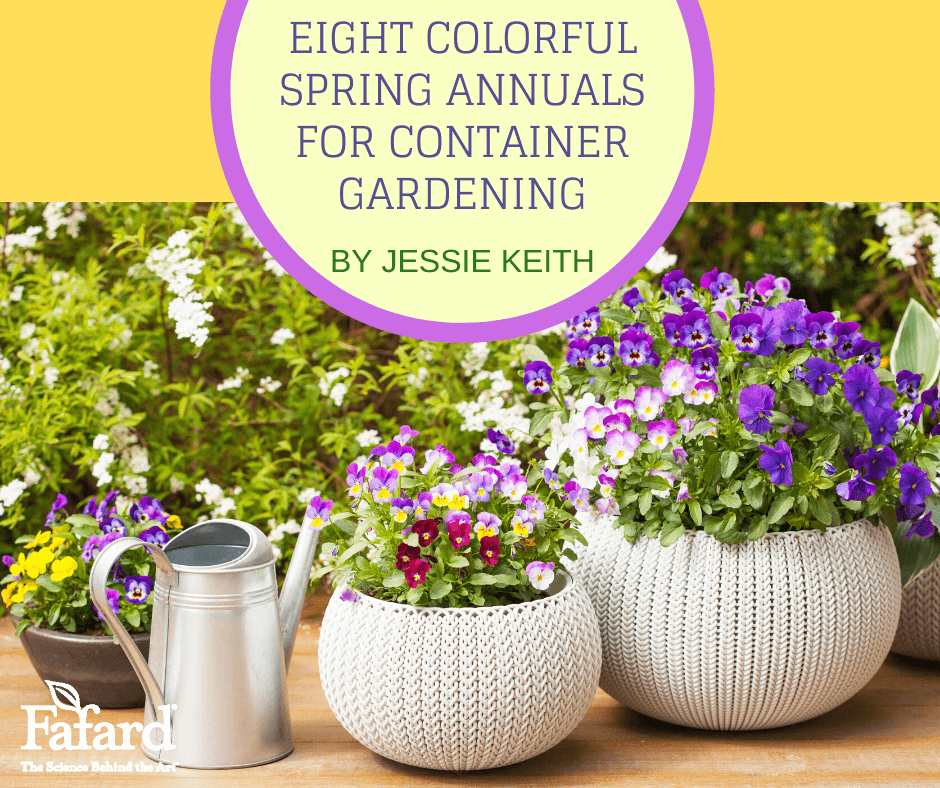

When spring is in the air gardeners want to get planting, and there’s nothing like the fast burst of color that spring annuals bring to containers. They boost bulb plantings and spring-flowering shrubs with an extra pop of pizazz. Place them on a porch, patio, or beside your front door to enliven your senses and home’s curb appeal.
As spring container gardening becomes more popular, the variety of pretty flowers for the job grows. Here are eight of the best that thrive in the cool weather of the spring season. Some are old favorites and some are newer types worth trying. Those that can tolerate light frosts are noted. All prefer full to partial sunlight. Plant them in pots of fresh Fafard® Ultra Container Mix with Extended Feed, which feeds plants for up to 6 months, for best performance.
Pot Marigold
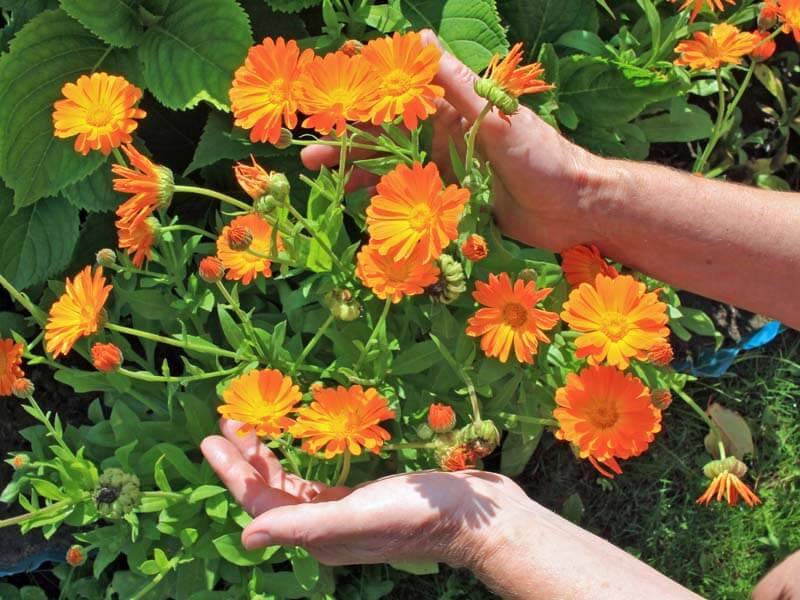
Old-fashioned pot marigolds (Calendula officinalis) look a bit like traditional marigolds with their single and double daisies of orange or gold, but unlike classic marigolds, they like cool weather. These flowers are easily started from seed in spring. Plant them indoors (click here to learn how), or simply sprinkle some seeds into an outdoor pot filled with quality potting mix, like Fafard Professional Potting Mix, cover them lightly, keep them moist, and watch them sprout and grow to blooming-size in a flash. The brilliant orange, double-flowered ‘Neon’ is a fun choice that reaches 2 feet, and the shorter Kablouna Lemon has frilled, bright yellow flowers.
Twinspur
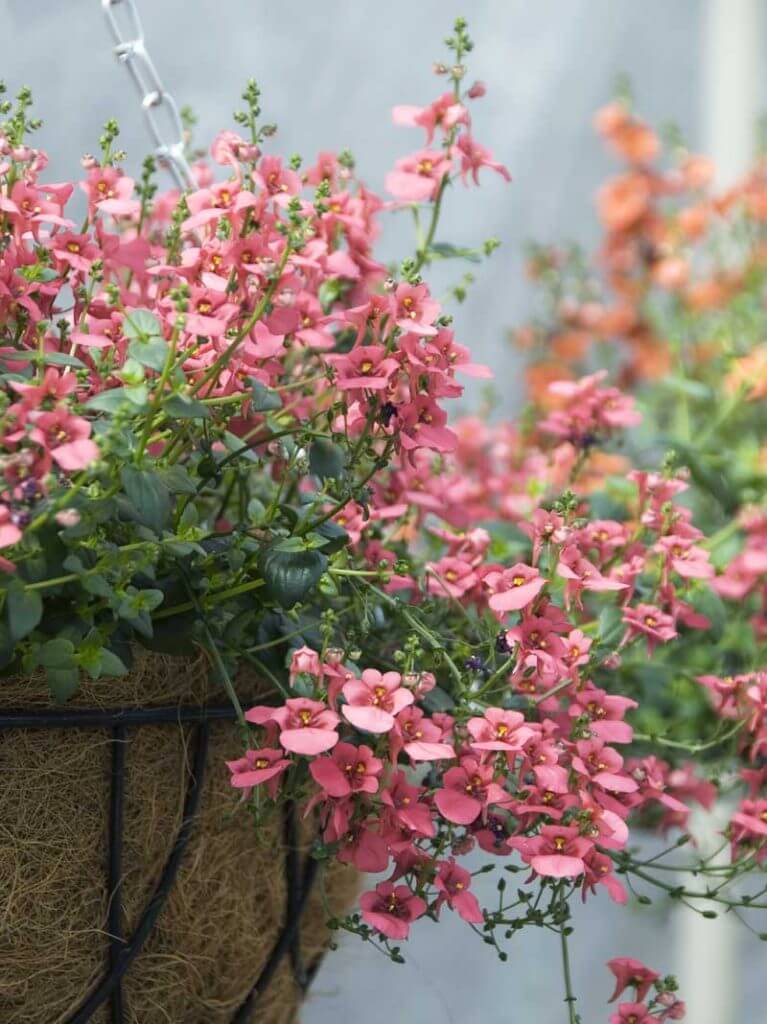
Commonly called twinspur (Diascia hybrids), this easy annual enjoys cool, spring weather and becomes covered with colorful spurred flowers. The blooms attract bees and hummingbirds and come in shades of pink, apricot, salmon, and rose. The variety My Darling Berry is particularly high performing and has berry-pink blooms and a bushy, low-growing habit that reaches one foot. The delicate ‘Apricot Queen’ has a more trailing habit and soft, apricot-pink blooms. Twinspur is somewhat frost-hardy.
Trailing Lobelia
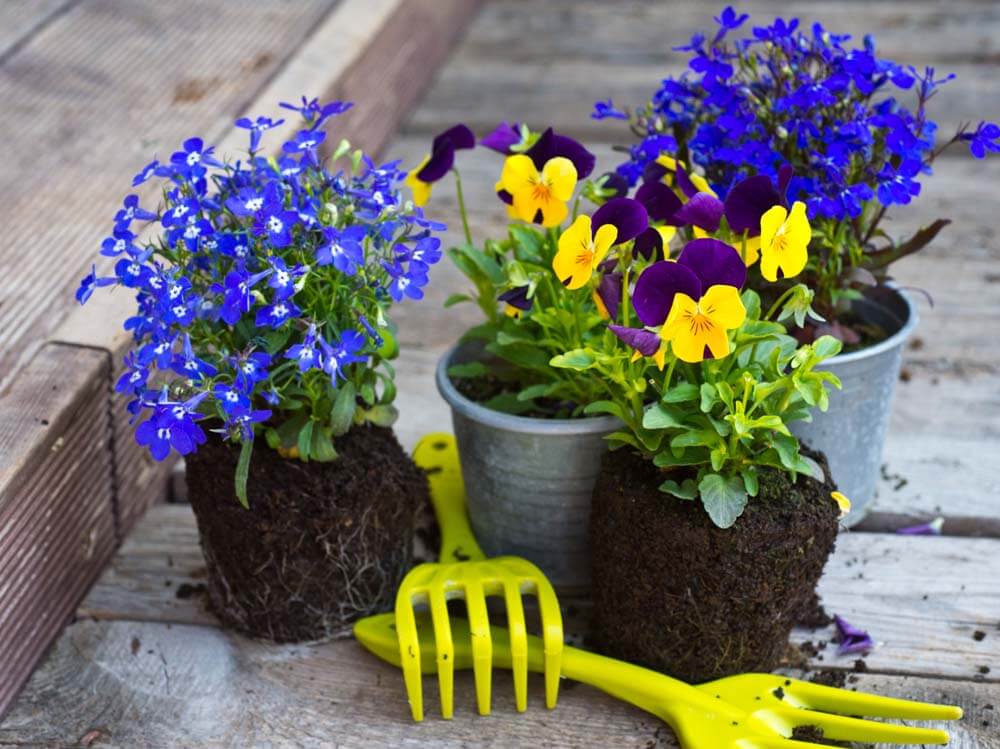
Trailing lobelia (Lobelia erinus) is a classic, heavy flowering annual that thrives in cooler temperatures. The blooms are small and numerous and come in various shades of violet-blue, purple, rose, and white. It does not favor frost, so plant it in mid-spring when the threat has passed. Plant it along container edges to make the most of its cascading habit. The varieties in the Laguna® series, such as the deepest blue-flowered Laguna® Dark Blue, are very high performing. They can continue flowering into summer with good care but must be watered regularly and protected from the full, hot sun.
Nemesia

Nemesias (Nemesia hybrids) are fragrant, big bloomers with low, somewhat trailing habits. They come in a riot of brilliant colors, such as bright orange, pink, red, yellow, and white, that really light up containers. They tend to favor the cooler growing conditions of spring or fall, but those in Proven Winner’s Sunsatia® series can tough it out through summer if protected from the hot afternoon sun and planted in a well-drained mix and given plenty of water. The orange and red Sunsatia® Blood Orange is a real standout as is the award-winning Sunsatia® Aromance™ Pink, which has delicately colored blooms of mauve-pink, white, and yellow.
African Daisy
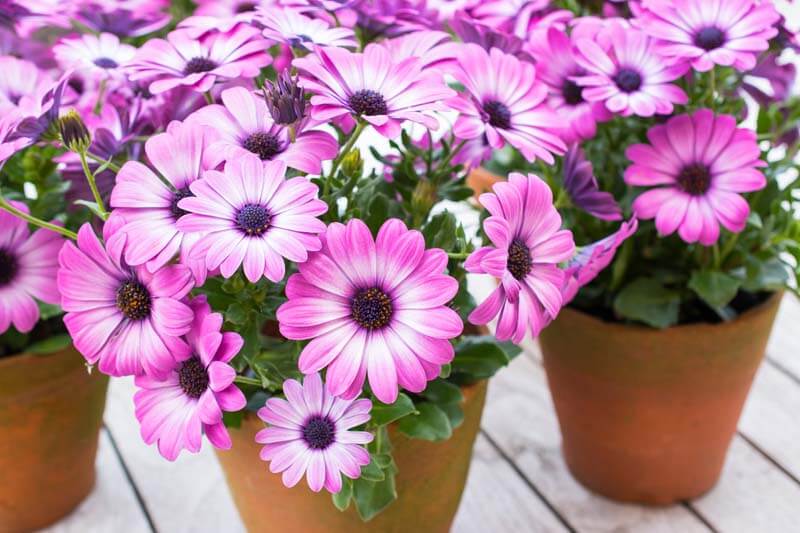
African daisy hybrids (Osteospermum hybrids) are derived from species that originate from the South African Cape, where weather conditions are mild and comparable to those in the Mediterranean. The plants bloom nonstop in spring and will continue into summer with good care. For a sunny show, add the 14-inch Lemon Symphony to a spring pot. Its large daisies are lemon yellow with a ring of purple around the eye. Lovers of pink should go for the 12-inch-tall Bright Lights™ Berry Rose, which has large daisies of the brightest pink. Plant African daisies after frosts have passed.
Sweet Alyssum
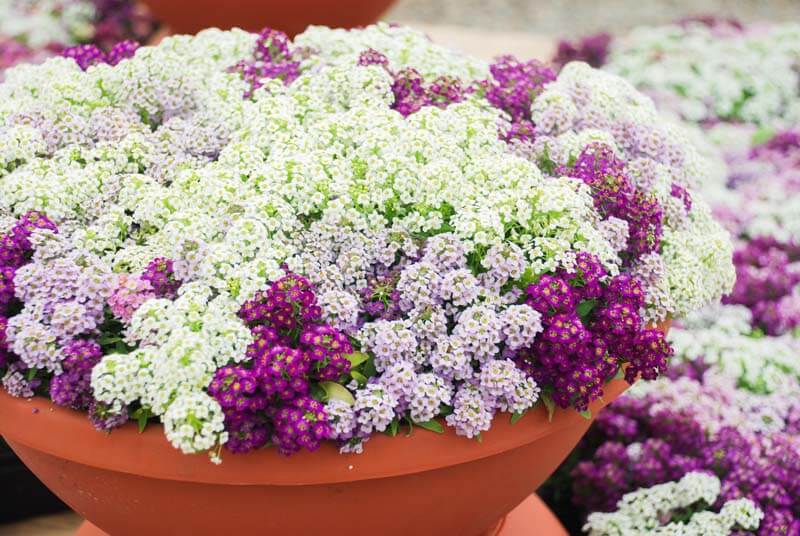
Wonderful fragrance and nonstop flowers are the high points of sweet alyssum (Lobularia maritima), which thrives in both cool weather and hot. It becomes covered with clusters of tiny, four-petaled flowers of white, purple, or pink that just keep going. It is sold at any garden center in spring, generally in inexpensive four or six packs. Spring classics include the low, spreaders in the Easter Bonnet series, which may have purple, pink, or white flowers. Sweet alyssum is tolerant of light frost and mixes well with just about any container combo.
Stocks

Classic stocks (Matthiola incana) are made for spring. The powerfully sweet fragrance of their pink, red, purple, white, or yellow flowers make them perfect for door-side pots. The plants thrive in cool weather and can even tolerate some frost, so they can be planted early. Look for these at your favorite garden center. Double-flowered forms are showiest. Once the summer heat hits, stocks tend to fade, but they can be planted again in fall.
Viola and Pansy

Pansies and violas (Viola hybrids) are everyone’s favorite spring annuals for containers and garden edges. They are very tolerant of frosts and bloom endlessly in cool weather with their funny whiskered, flat-faced flowers. Those with the biggest show are smaller-flowered forms, like the violas in the Sorbet series. They produce loads and loads of smaller flowers in many pastel colors that really produce up until early summer. Lovers of large-flowered pansies should look for packs of vigorous Delta pansies with many buds and bushy growth. Pull them once they begin to die back and plant them again in fall containers.
Mix and match these flowers in your front pots for personal enjoyment and to wow your neighbors. They’re the best way to reign in spring.



